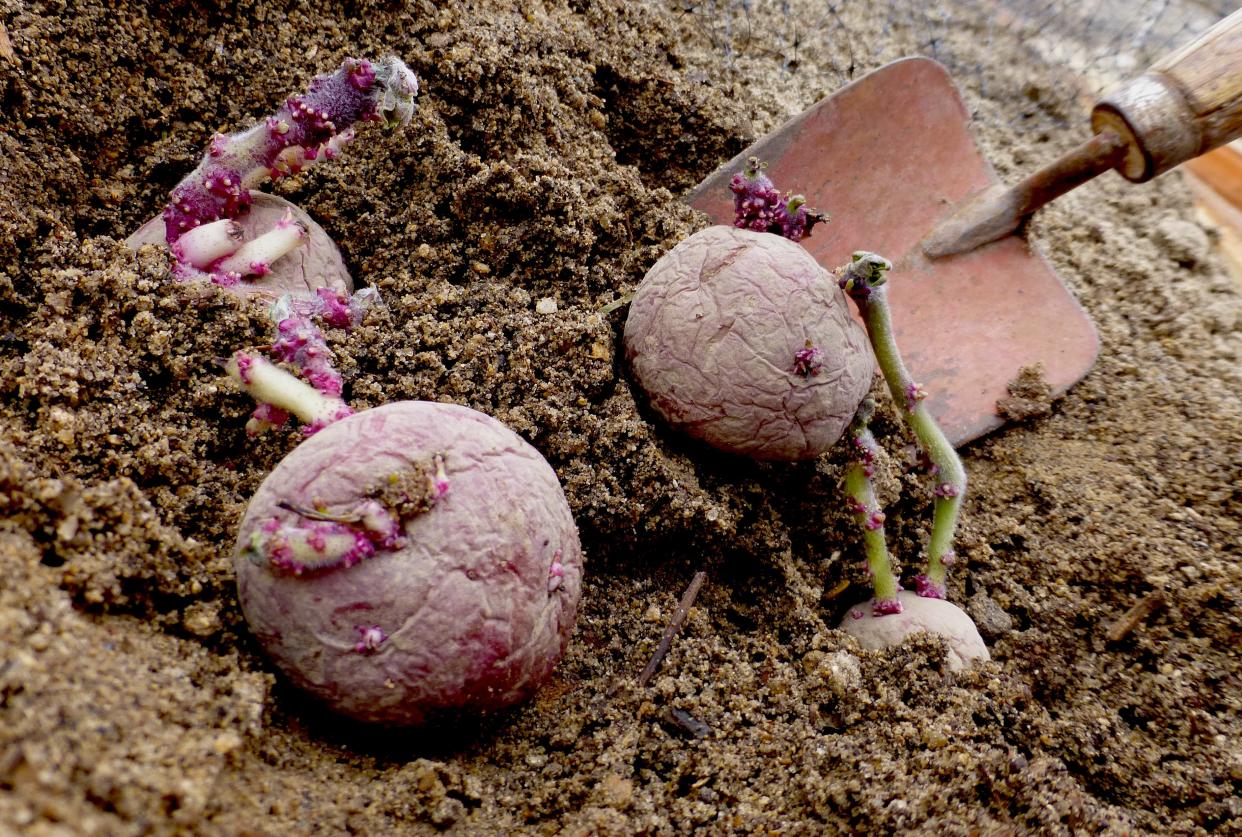Gardening for You: Plant seed potatoes on the Ides of March
The Ides of March, March 15, was not a good day for Julius Caesar but it is a good day for planting seed potatoes. The phrase “Beware the Ides of March” was a warning given to Julius Caesar in William Shakespeare’s play of the same name, "Julius Caesar". That Julius Caesar was warned about that date is a historical fact as recorded by the Roman poet Publius Terentius Afer.

In Afer’s account, Caesar visited the soothsayer Spurinna one month before his murder when she predicted his life would be in danger for the next 30 days. Exactly one month later, on the Ides of March, Julius Caesar was murdered by a group of Roman Senators in 44, B.C., and the warning was validated (history.com).
As gardeners, we don’t have to worry about Roman senators on the Ides of March, but it is our date to plant seed potatoes in the garden. Why March 15 for planting potatoes?
Timing of planting seed potatoes is important. They need just-right soils for optimum growth. Botanically, potatoes are tubers, swollen underground stems, which as a cool season crop needs to be planted early enough to allow for tuber development during the cooler months. For optimum growth, soil temperatures cannot be not cold nor too warm and soil needs to be not too wet nor too dry.
Plant too early and potato tubers will rot in cold, wet soils; plant too late, when temperatures are warm, and tubers will mature early at a small size. It is important to plant seed potatoes early enough to allow for tuber development in the cooler season. Planted in mid-March, tubers will grow in the spring months and be ready for harvest in June.
Potatoes are propagated from certified seed potatoes, vegetative propagules that can be purchased ready to plant or can be made from store-bought tubers.

Every seed potato must have an eye, or bud, the structures from which new plants arise. These are the structures that are an annoyance when a potato that has been stored for a time is being prepared for a meal only to find that sprouts are growing from the tuber. Left to grow, these sprouts will be the propagules for growing a new crop of tubers.
Plant seed potatoes with eyes facing up. There are two ways to plant: place seed potatoes in a trench that is several inches deep then cover with soil; as plants grow mound or hill up soil on the sides of the stems until the hill reaches an eventual height of several inches. The second method is to plant seed potatoes 2 to 3 inches deep, spaced about 2 feet apart.
Plant in full sun, six to eight hours of daylight per day. Soil should be tilled deeply and friable, which allows full development of the tubers as they swell during development. Tubers grown in soil allowed to become too dry will be misshapen but if soil is kept too wet, tubers will rot. A consistent water regime produces evenly formed tubers.
Tubers are ready for harvest when tops die back in June.
Ellen Peffley taught horticulture at the college level for 28 years, 25 of those at Texas Tech, during which time she developed two onion varieties. She is now the sole proprietor of From the Garden, a market garden farmette. You can email her at gardens@suddenlink.net
This article originally appeared on Lubbock Avalanche-Journal: Gardening for You: Plant seed potatoes on the Ides of March
